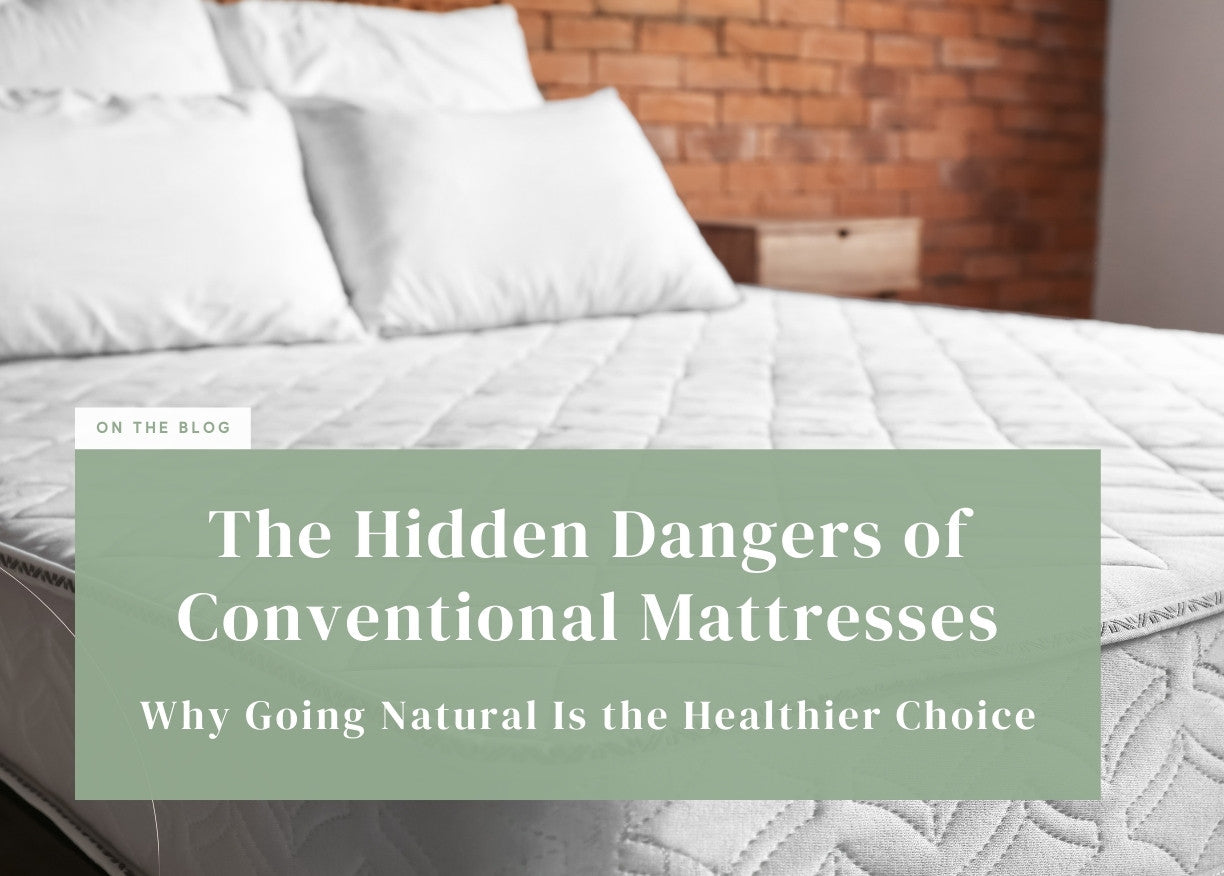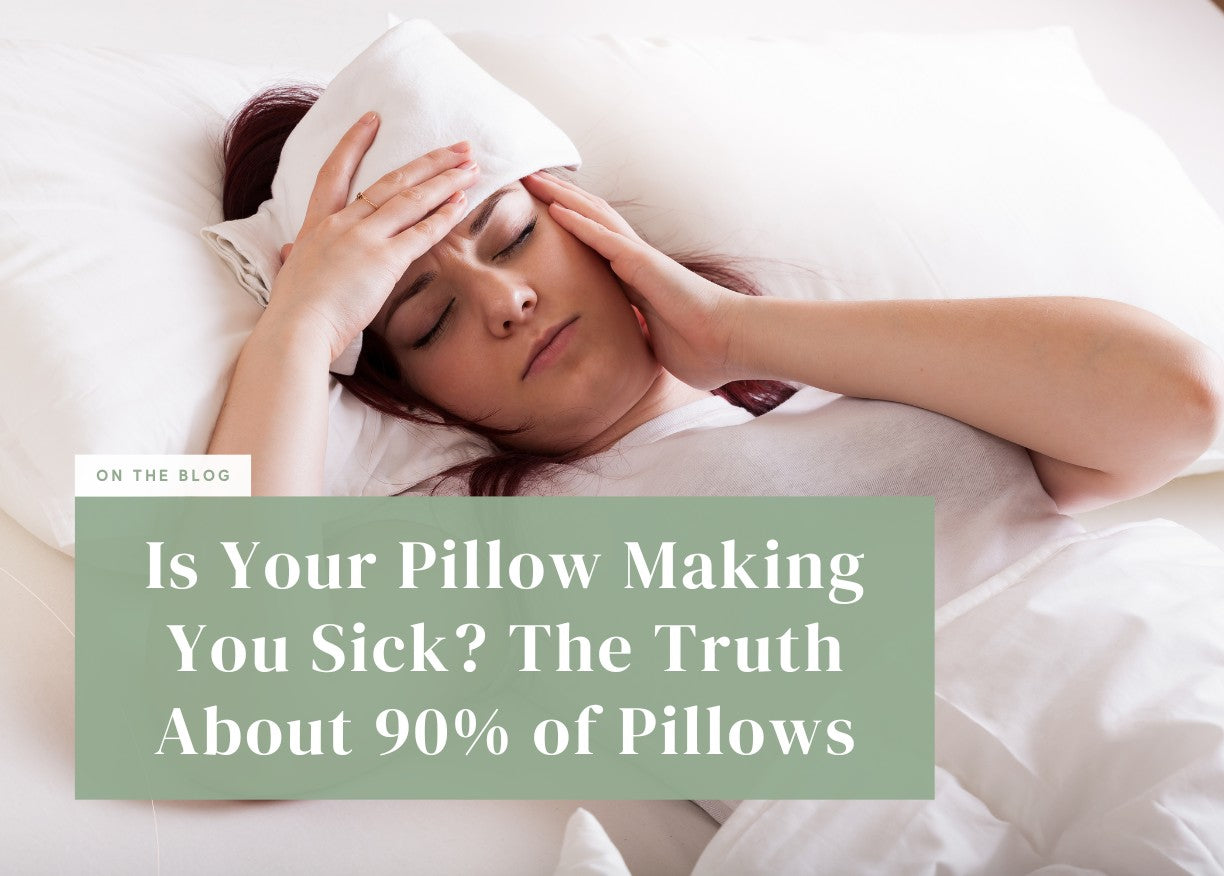The Hidden Dangers of VOCs in Memory Foam
The smell hits you the moment you unbox it—a strange, chemical-like odor from your brand-new memory foam mattress. You’re told it will dissipate in a few days, but have you ever wondered what you’re really breathing in? That smell comes from volatile organic compounds, or VOCs, which are emitted by many synthetic mattresses. And they may be more harmful than you think.
Let’s explore the hidden dangers of VOCs in memory foam, what they mean for your health, and how to choose a safer, healthier alternative.
What Are VOCs, and Why Do They Matter?

VOCs are chemicals that easily evaporate into the air at room temperature. They’re found in many household products, including paints, cleaning supplies, and yes—memory foam mattresses. The Environmental Protection Agency (EPA) warns that long-term exposure to VOCs can lead to various health problems, including headaches, respiratory irritation, and even potential organ damage.
In memory foam mattresses, VOCs are often released through a process called off-gassing. These compounds originate from the polyurethane foam and chemical adhesives used in their construction.
Health Risks Linked to VOCs
-
Respiratory Issues
Breathing in VOCs can irritate your respiratory system, particularly for people with asthma or allergies. According to the Asthma and Allergy Foundation of America (AAFA), poor indoor air quality caused by VOCs can exacerbate symptoms and make it harder to breathe.
-
Headaches and Fatigue
Exposure to high levels of VOCs has been linked to headaches, dizziness, and fatigue, as reported by the Centers for Disease Control and Prevention (CDC). These symptoms are especially common during the first few days after unpacking a memory foam mattress.
-
Long-Term Health Concerns
Certain VOCs, such as formaldehyde, benzene, and toluene, have been classified as carcinogens by the International Agency for Research on Cancer (IARC). While levels in mattresses are typically low, prolonged exposure in poorly ventilated spaces may contribute to long-term health risks.
How to Minimize Exposure to VOCs
If you already own a memory foam mattress, there are steps you can take to reduce VOC exposure:
- Ventilation: Place the mattress in a well-ventilated area for several days after unboxing to allow off-gassing to occur outside your bedroom.
- Air Purifiers: Use an air purifier with a HEPA filter to remove airborne VOCs from your indoor environment.
- Protective Covers: Consider using a mattress cover made from natural materials to act as a barrier.
The Sweet Zzz Difference: A Safer Sleep Solution
If you’re concerned about VOCs and off-gassing, switching to a natural mattress is a healthier option. The Honey Hybrid Organic Mattress from Sweet Zzz is crafted from organic materials and free from harmful chemicals, ensuring a safe and restful sleep. It’s certified by leading organizations like GOLS (Global Organic Latex Standard) and GOTS (Global Organic Textile Standard), so you can trust that it’s as healthy as it is comfortable.
Unlike memory foam, which relies on synthetic materials, the Honey Hybrid uses natural latex and organic cotton. These materials not only eliminate VOCs but also offer superior breathability and durability, making them a smart investment for your health and comfort.
Final Thoughts: Make the Switch to Safer Sleep
Your mattress should help you relax and recharge, not expose you to harmful chemicals. By understanding the risks associated with VOCs in memory foam and choosing safer alternatives like the Honey Hybrid Organic Mattress, you can protect your health and enjoy truly restful sleep.
At Sweet Zzz, we’re committed to providing eco-friendly, non-toxic sleep solutions that prioritize your well-being. Because better sleep starts with safer products.




